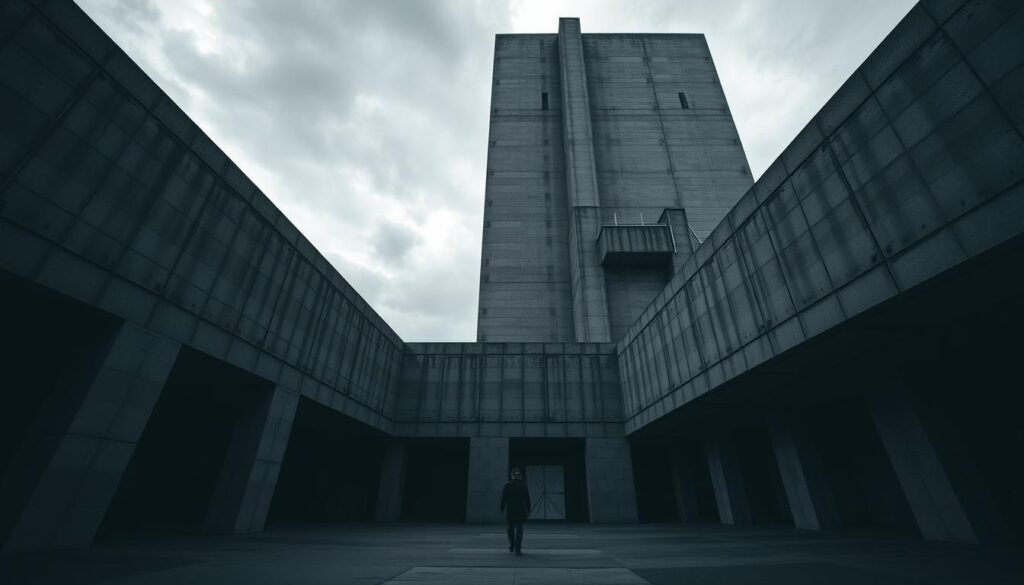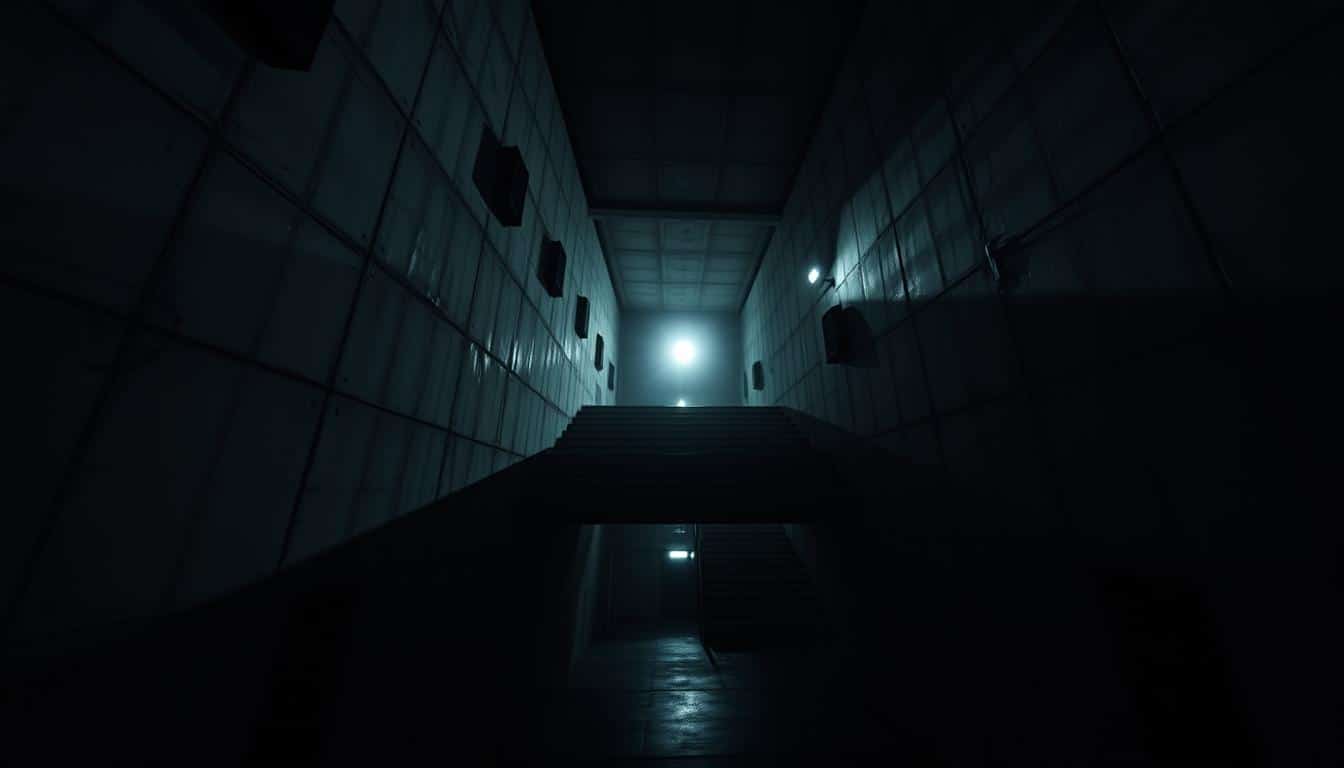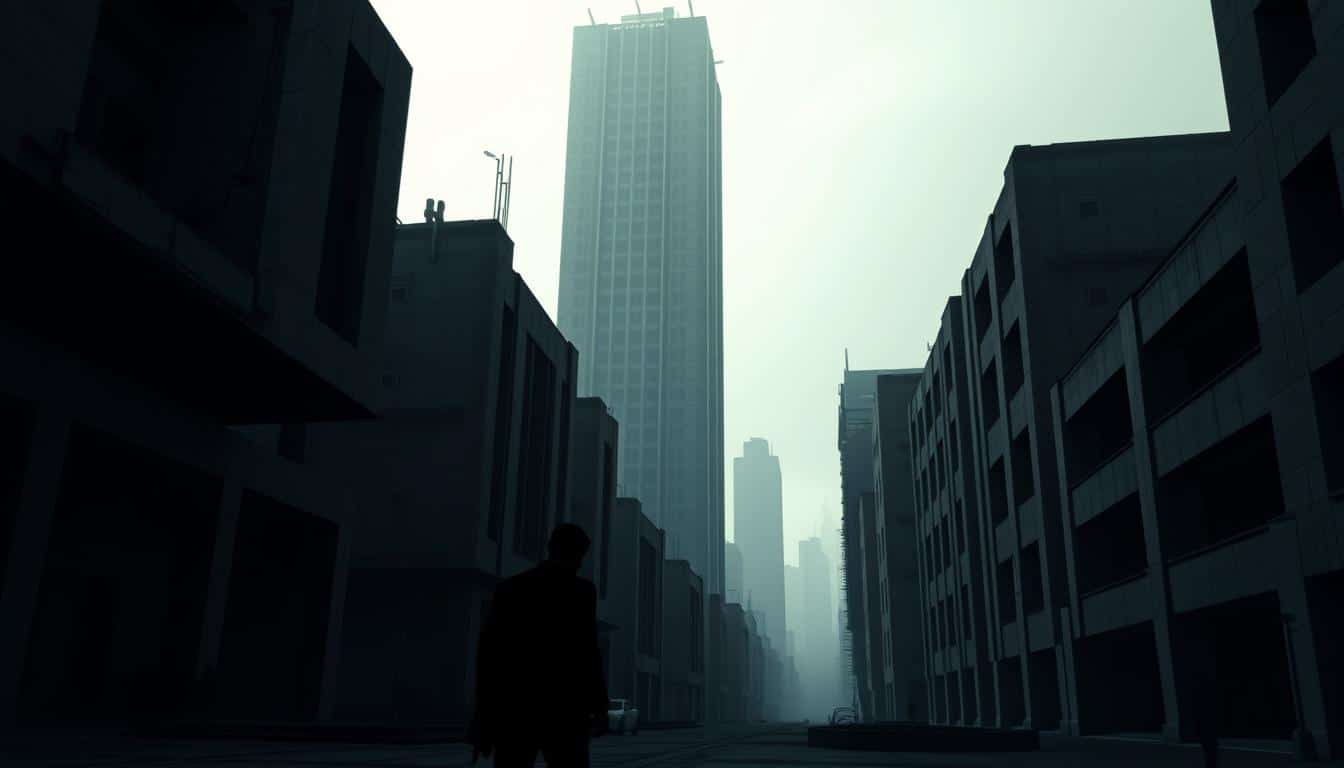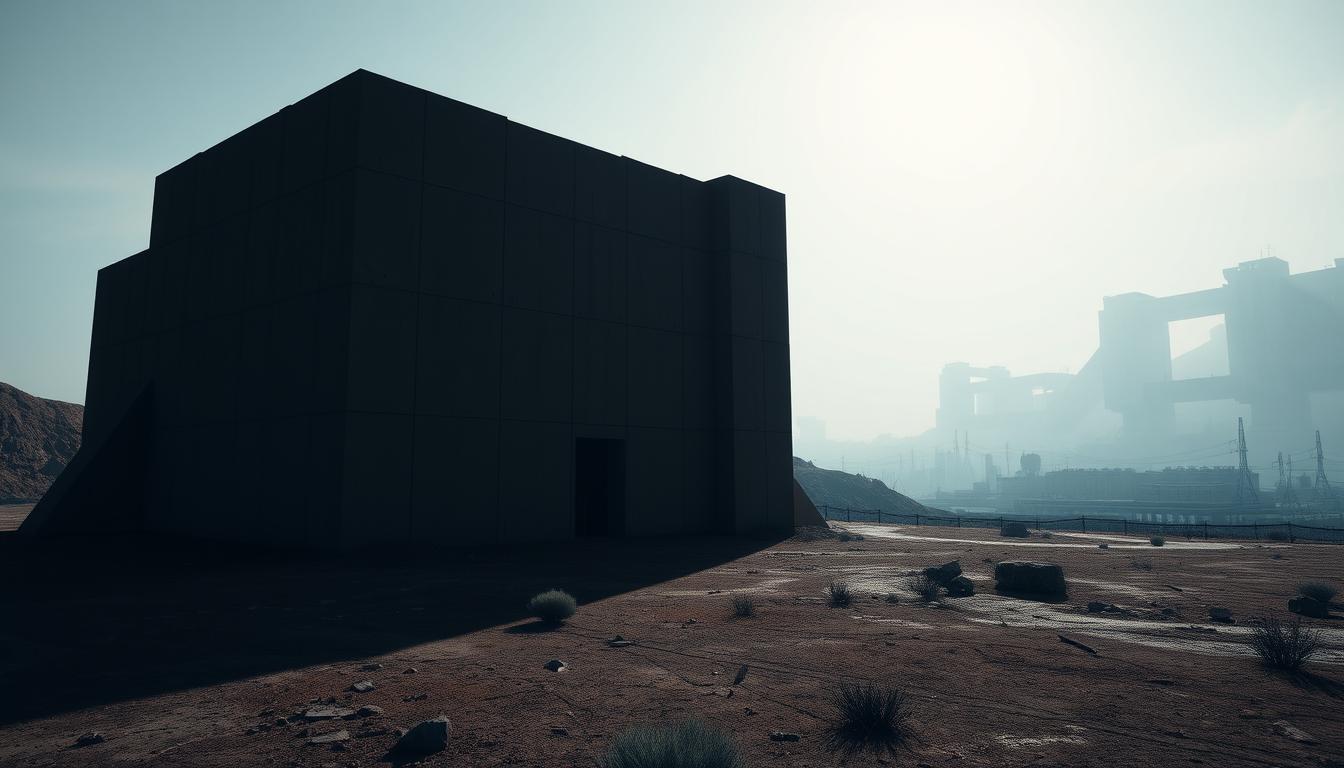Brutalism has been a hot topic in the world of design, known for its bold, bare look. It prioritizes function and the raw beauty of materials. Now, this style plays a big role in horror video games, making them more intense.
Games use harsh concrete and straight lines to bring out feelings of fear and tension, just like brutalist buildings do. By shifting from real buildings to game worlds, we see how brutalism changes game design. It adds depth to horror games, leaving a lasting impression on players.
Introduction to Brutalism in Gaming
Brutalism in gaming lets us see how architecture merges with digital experiences. This style is known for its raw, bare designs. It shines in psychological horror games. More indie game creators are using brutalism. They add its bold architectural ideas into their game worlds.
The impact of architecture on games is clear. Stark settings and simple shapes create a spooky feeling. Game makers use brutalist traits to draw players in. They make games feel disorienting. This boosts the scary mood of horror games. Brutalism has made a comeback. It’s blending old styles with new tech in big games too.

The Origins of Brutalism in Architecture
Brutalism started in the mid-20th century, a time of big social and political changes. Architects like Alison and Peter Smithson and theorist Reyner Banham shaped its core ideas. They loved the raw look of materials and clear structures, setting brutalism apart from earlier styles.
This architectural style came about as an answer to urban life’s challenges, showing modern human experiences. By focusing on functionality and the raw beauty of concrete, brutalists made buildings that were useful and meaningful. They captured the cultural impact of brutalism, reflecting the post-war period.
During this time, architecture stood out with bold shapes and true use of materials. These buildings became iconic, changing how cities looked and sparking debates on architecture’s societal role. This era’s architectural efforts have deeply influenced how we see and use public and private spaces today.
Defining Features of Brutalist Architecture
Brutalist architecture stands out for its simple yet impactful aesthetic. It uses raw materials, mainly limiting decorations. Its main feature is the extensive use of bare concrete. This shows off its rough texture and how solid it is. Buildings in this style look strong and lasting, thanks to their blocky shapes.
The style focuses on geometric shapes and tall lines. These features are not just for show. They serve real purposes in cities. Brutalism prefers being useful over looking pretty, which makes it different from other styles.
- Raw and unrefined materials, primarily concrete
- Bold, block-like forms and outlines
- Focus on functionality and social utility
- Geometric shapes that enhance visual interest
- Vertical lines that emphasize height and grandeur
Brutalist design makes a bold statement, showing a philosophy that values community and meeting social needs. This approach reflects a time when architecture was about more than looks. It had to be strong and dependable, fitting seamlessly into urban surroundings.
The Shift to Digital and Neo-Brutalism
The shift from traditional brutalism to digital has sparked the birth of neo-brutalism. As our technology gets better, the features of classic brutalism change to meet new needs. This change shows how digitalization affects gaming, changing how we experience and interact with games.
Neo-brutalism stands out by bringing a fresh look to digital spaces. It keeps the raw and simple style of its forerunner, and is found in indie games that focus on mood and feelings. Developers use simple designs to bring out feelings of loneliness or pressure, improving how we enjoy games.
Modern brutalism has key features that set it apart from the detailed visuals often seen in big games. By concentrating on these aspects, game makers can create captivating worlds:
- Use of stark contrasts and bold shapes
- Emphasis on structural clarity and function
- Integration of real-world physics and lighting
This new take on brutalism in gaming lets players explore their worlds in ways they couldn’t before. Adding these ideas to game design is changing and expanding how we connect with games.
The History of Brutalism Related to Psychological Horror Video Games
Brutalism and psychological horror in video games create a unique story experience. This style in games taps into various traits that increase tension and draw players in. Using oppressive settings, strong feelings of being alone, and weird layouts, developers make games that truly unsettle players.
Key Characteristics of Horror Games Utilizing Brutalist Elements
Brutalist elements bring out specific features in horror games. These features are:
- Oppressive Atmosphere: The plain and harsh design of brutalist buildings gives a strong feeling of fear.
- Sense of Isolation: The game settings often show a sense of being all by yourself, making you feel exposed.
- Surreal Spatial Experiences: Odd shapes in brutalist architecture make moving through the game confusing.
These elements blend well into games, making the horror aspects stronger and keeping players on their toes.
Case Studies of Influential Games
Games like “Control” show how well brutalist elements work. This game uses a lot of brutalist ideas, making spaces that are both known and strange. This makes players feel more uneasy.
“Scorn” is another game that uses brutalism to touch players deeply. Its design feels cold and unwelcoming, and this fits the game’s scary and deep themes. In these games, brutalism changes how players feel, making the game an experience like no other.
Architectural Influence on Game Design
Architectural elements in games are key to understanding how built environments shape gameplay. Game design often mirrors real-world architecture. This creates immersive worlds that pull players into detailed landscapes. Architecture and gaming work together to guide player movement and shape their feelings.
Brutalist architecture stands out for its bold forms and practical beauty. It’s a tool for game creators. By using brutalist styles in games, designers build unique settings that deepen the story. These spaces do more than just function; they add to the story, touching on themes like isolation or power.
Using architectural theories can offer deeper insights into game design. They help developers see how buildings affect player choices and movements. Different spaces can make players feel curious or tense. As games grow, the role of architecture in them becomes even clearer. It shows that design is not just about looks. It also deeply influences how players interact with the game and feel about their experience.
Exploring Psychological Impact in Brutalist Horror Games
Understanding the mind’s journey in brutalist horror games is key to grasping player immersion. The stark and cold feel of brutalist design plays a big role. It shapes how players feel, often stirring up fear and discomfort.
The design of horror games uses elements that stir up players’ fears. Things like harsh lighting and sharp, empty spaces make everything feel more intense. These designs pull players into a world filled with tension.
Immersing in these games makes every scare feel bigger and every shadow deeper. Players moving through these spaces feel uneasy. The mix of design and psychology leaves a deep emotional mark, lasting long after the game ends.
Notable Brutalist Horror Games: A Closer Look
Exploring notable brutalist horror games uncovers deep design and stories that shape player experiences. Titles like “S.T.A.L.K.E.R.” and “Silent Hill” use architecture to create fear. These games show how brutalism influences both looks and storytelling, creating strong emotional bonds.
Analysis of Player Experience and Immersion
An in-depth look at player experience in these games shows how key immersion is. Brutalist design makes players feel wrapped in spaces full of tension. The bold architecture turns into a character itself, driving player feelings and actions.
- In “S.T.A.L.K.E.R.”, empty structures and lonely places stir fear and loneliness, making the horror feel real.
- “Silent Hill” uses foggy streets and old buildings to trap players, upping the scare factor.
- Effective sound and limited sight in these games boost the feel of the architecture around.
These games take immersion to the next level, making players explore fear, memory, and despair.
The Cultural Resonance of Brutalism in Gaming
Brutalism’s impact goes far beyond buildings, touching the hearts of those who play video games. Its bold, straightforward design draws players into stories filled with today’s fears. In the gaming world, brutalism creates places that remind us of a future we hope to avoid, full of loneliness.
This type of design in games shows how closely it mirrors our society’s worries. By exploring spaces that feel both strange and unwelcoming, players get deeper into their gaming experience. These areas reflect our real-life issues with fitting in and finding out who we are.
Wandering through these game worlds, players find stories that match the tough look of brutalist architecture. These tales explore the challenges we all face, connecting art with how we feel inside. The sights and stories in these games make us think critically about our lives and the society we live in.
Conclusion
Exploring brutalism in gaming has shown us its cultural and psychological impact. Brutalist architecture’s raw look enhances the feel of horror games. It becomes part of the story, making players feel dread and isolation.
The future looks bright for brutalism in video games. Developers are getting better at including architectural styles in their games. They’re making game worlds that deeply connect with players emotionally.
Brutalism in horror games keeps its history alive while setting new trends. As games evolve, brutalism will create even more engaging experiences. It will guide players and developers towards innovative ways to experience games.



